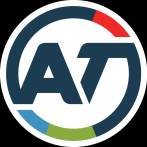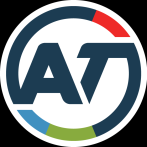

20 Viaduct Harbour Avenue Auckland 1010
Private Bag 92250, Auckland 1142, New Zealand
Ph 09 355 3553
Fax 09 355 3550
17 December 2021
Tony Randle
[FYI request #17720 email]
Kia ora Tony
The information you requested – CAS-471846-X7Q8C9
Thank you for your request for information dated 25 November 2021 about the Regional
Land Transport Plan (RLTP) 2021-31’s definition of rapid transit, and the exclusion of the
Onehunga Line from this definition.
Auckland Transport (AT) has been collaborating on the development of an Auckland Rapid
Transit Plan with Auckland Council (AC) and Waka Kotahi New Zealand Transport Agency
(WK). An early part of this project involved the development of a ‘Rapid Transit Baseline’
(Baseline), by which these three agencies agreed on a shared understanding of rapid
transit in the Auckland context. This Baseline document’s definitions are the basis on which
decisions were made regarding which services would be included as rapid transit in the
RTLP. The Baseline document has also been through the governance of the Auckland
Transport Alignment Project (ATAP), which includes representatives from the Ministry of
Transport, KiwiRail, the Treasury, and other central government agencies.
Members of the rapid transit plan’s working group discussed the interrelationship of the
National Policy Statement on Urban Development (NPS-UD), the RLTP, and the Baseline’s
definitions to agree that the Onehunga line did not meet the agreed definition of rapid transit
in Auckland. The key criteria that the service fails on is frequency – the Onehunga line only
operates services half-hourly, and there are no plans to change this in the next 10 years
(i.e., the timeframe of the RLTP). This contrasts with other train services, which will all
operate at least every 15 minutes (7am to 7pm, 7 days a week) once the City Rail Link
opens. At this point they will meet the Baseline’s definition of frequent (and therefore met its
definition of rapid transit)
Questions 1, 2, 3, 4 and 5
In answer the first five of your questions, regarding the definition of “quick” (called “fast” in
the Baseline), “frequent”, “reliable” and “high capacity”, the Baseline’s definition was used.
The full document (Auckland Rapid Transit Baseline - Working Doc.pdf) is attached as per
your request, but the relevant criteria are set out below:

 3.2
Rapid transit is defined by its service characteristics
Rapid transit is:
3.2
Rapid transit is defined by its service characteristics
Rapid transit is:
•
Fast – rapid transit services offer time-competitive travel with private vehicles, particularly
at peak times. This does not require rapid transit to always be faster
than travel by private
vehicle. It does mean travel times must be close enough that other advantages of rapid
transit (such as its reliability) make it a highly attractive option. To achieve this
characteristic, rapid transit is generally faster than other public transport services, through
provision of a dedicated corridor and wider spacing between stops.
•
Frequent – rapid transit services form part of the frequent public transport network, and
therefore operate at frequencies that enable users to ‘turn up and go’ at most times of day,
seven days a week.i These high frequencies enable rapid transit to quickly shift large
numbers of people and allow for efficient connections between different public transport
services.
•
Reliable – rapid transit services operate with very high levels of reliability and are
unaffected by other parts of the transport network. They have priority over other traffic
through a dedicated corridor and/or priority at intersections. High reliability helps make
rapid transit services competitive with private vehicles. Reliability complements frequency,
by ensuring even spacing between services and predictable departure times, which
enhances the customer experience.
•
High capacity – the combination of high frequency and large vehicles able to carry many
people means that rapid transit corridors can move significant numbers of people per hour
in a relatively small amount of space.
Regarding your fifth question, around the definition of a “a permanent route”, the Baseline
assumes that ‘permanent’ means that the service operates regularly (not intermittently, such
as on some days of the week but not others) on infrastructure that is intended for its use.
The Baseline’s definition says the following about the quality of that infrastructure:
3.4 Rapid transit has total priority
A key aspect of rapid transit is its ability to always operate reliably, regardless other factors
affecting the transport network. In order to achieve this reliability, rapid transit usually
operates in corridors that are physically separated from other modes. This results in total
priority that enable services to run more quickly, frequently, and safely than other public
transport services.
These dedicated corridors may operate at-grade, above or below ground, or in a
combination. Corridors typically avoid conflicts where they cross another transport corridor
through grade-separation. Where rapid transit corridors cross others at-grade, the rapid
transit corridor should have priority by way of signal pre-emption (such as level crossings on
the rail network). This provides the priority that ensures services can continue at speed and
without impacting reliability. Grade separated crossings are generally preferred to reduce
risks to other users and minimise the chances of service disruption.
AT-grade corridors may be on-street in urban areas, but only where this does not affect the
quality of service or have unacceptable safety risks. Generally, this requires dedicated lanes
and priority at intersections, although ‘time-segregated’ running may also be an option.ii








































 Questions 6 and 7
Questions 6 and 7
With regards to your question 6 and 7, there were no “reports, presentations or working
papers” other than the Baseline that specifically addressed the status of the Onehunga Line
and its stops as it related to their classification (or not) as rapid transit.
The following table from the Baseline outlines how the agencies assessed the existing rapid
transit network, as set out in the Regional Public Transport Plan, against the Baseline’s
criteria. This was the basis for the classification of the included in the RLTP. Criteria that are
green were considered to be met today. Yellow will be met once projects funded in the RLTP
are met. Red means the criteria will not be met (either in whole or on parts of the route)
within the timeframe of the RLTP:
Service
Fast
Frequent
Reliable
High
Dedicated
Shaping
Capacity
Corridor
Urban
Development
Western Line
(rail)
Travel time and off-peak frequency issues wil be resolved once City Rail Link and new timetable
are operational.
Southern Line
(rail)
Off-peak frequency issue wil be resolved once City Rail Link and new timetable are operational.
Eastern Line
(rail)
Off-peak frequency issue wil be resolved once City Rail Link and new timetable are operational.
Onehunga
Branch (rail)
Frequency limited by single track.
Pukekohe
Connection
(rail)
Existing shuttle service and associated infrastructure limit speed (due to transfer), frequency and
capacity. Electrification wil overcome these issues.
New stations, part of the New Zealand Upgrade Programme, wil help to shape urban development.
Northern
Busway
services (NX1,
NX2)
Priority infrastructure does not extend for full length of services. This lack of a dedicated corridor
creates delays and reliability issues in the city centre. The impact of these issues on customers is
mitigated by the frequency of services.
There is limited evidence to date of the busway shaping urban growth, although proposals for
intensification near certain stations are emerging.
General y meets requirements
Deficiencies that wil be
Deficiencies that wil not be
addressed by funded projects
addressed by funded projects



The Baseline document was completed in early 2020. Some of its references, particularly to
work that needs to be done, are now out of date. Work on the Auckland Rapid Transit Plan
has progressed and is due to be finalised early in 2022. The Baseline will be incorporated
into the final plan.
Questions 8 and 9
Correspondence within AT and between AT, AC and WK regarding your questions these
questions is attached. The correspondence, which directly addresses your questions 8 and
9, could be considered brief; this is because all the agencies involved had already agreed
that the Onehunga line did not meet the definition of rapid transit, either now or in the
planned future, as part of the Baseline’s development. Some information such as names
have been withheld under section 7(2)(a) of the LGOIMA, to protect the privacy of natural
persons including that of deceased natural persons.
Should you believe that we have not responded appropriately to your request, you are able
to make a complaint to the Office of the Ombudsman in accordance with section 27(3) of
the LGOIMA Act, and seek an investigation and review in regard to this matter.
Yours sincerely
Hamish Bunn
Group Manager Investment, Planning & Policy
Encl: Auckland Rapid Transit Baseline - Working Doc.pdf
Auckland Transport - CAS-471846-X7Q8C9 Combined emails_Redacted.pdf
i A true ‘turn up and go’ frequency would be a minimum of every 10 minutes. Currently, some rapid transit services only achieve
this during the peak. The Regional Pulbic Transport Plan (RPTP) aspires for the entire rapid transit network to achieve this
minimum frequency by 2028. The current definition in the RPTP is at least every 15 minutes, between 7am and 7pm, 7 days a
week.
ii Time segregated running is where sections of space are shared by rapid transit and other modes, and access to these
sections is controlled (e.g. by traffic signals) to dedicate the space to rapid transit operations when required















































